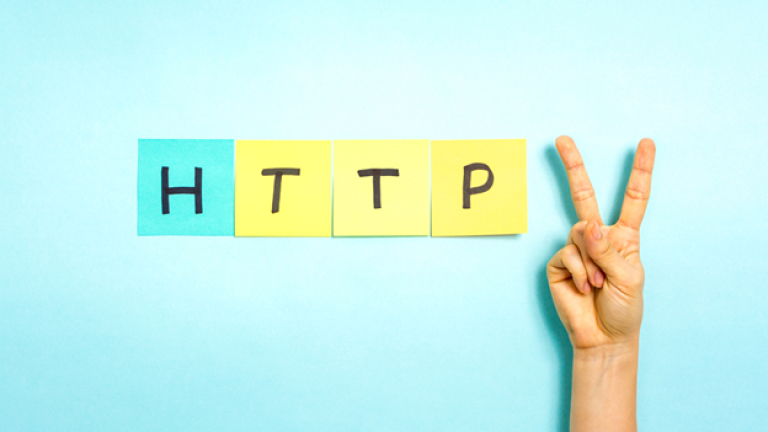
Whenever you click on a link to visit a site, a request is made to the server asking your web browser to fetch a file. It does so using HyperText Transfer Protocol (HTTP). In essence, HTTP is a request/response protocol that starts with your computer sending a request for some file (a page, a picture, etc.), and ends with the web server sending back a response containing the file itself.
With the previous HTTP1.1 protocol, the fetching process took some time since there was only one line available that had to open and close after each file was sent. The new and improved HTTP/2 protocol, on the other hand, offers significantly higher speeds as the line can be kept open and numerous files can be sent at once. In all, the new protocol will be faster, simpler and more robust.
What Exactly is a “Protocol”?
To understand what this actually is and what it will do for the web in general, you need to start at square one by understanding what these terms even mean. Basically, a protocol is a set of rules that govern the data communication mechanisms between clients (chiefly, the web browsers used by internet users to request information) and servers (the actual machines that store the requested information).
How does HTTP/2 work?
HTTP/2 will drastically speed up the web by introducing full multiplexing connections, which means that multiple requests can happen at the same time over a connection that stays open for the duration of the transfer process. When a user connects to a server, their browser negotiates an HTTP session with that server. The type of session created will vary depending on the features supported by the browser and the server.
HTTP/2 also uses Server push; a method in HTTP/2 that allows the server to send multiple responses for a single request. This feature can improve the time to retrieve a resource, particularly when a large number of subsequent resources must also be retrieved (e.g., a web page linking to dozens of JS and CSS files).
If the browser and server are both using HTTP/2, they can utilize features such as compression, multiplexing, and server push to optimize the connection. If either party does not yet support HTTP/2, both the browser and server will continue to use HTTP/1.1.
Why HTTP/2 for SEO?
Latency, the time that passes between when an action is requested and when it actually occurs, greatly affects how usable and enjoyable your site is on electronic devices. Users are increasingly less willing to wait for a page to load, and Google is all about user experience. For this reason, site speed has been an important SEO ranking factor for years. Over the past few years, websites have gotten bigger, adding such assets as HTML, JavaScript, CSS, images, etc. This inevitably results in longer loading time. HTTP/2 makes this process a lot easier to manage for servers and browsers and ultimately speeds things up all around.
Just over a year ago, Google announced a major change to the way its search index will rank sites: it will go mobile-first and will be taking an extra close look at the loading speed of your mobile site. The search engine giant will rank its search listings based on the mobile version of content, even for listings that are shown to desktop or laptop users. As more and more searches happen on mobile, Google wants its index and results to represent mobile searchers who make up the majority of their users.
Pages that already take advantage of responsive web design and implement dynamic serving don’t usually have to do anything to be ready.
Implementing HTTP/2
The HTTP/2 standard is the most significant update of the Hypertext Transfer Protocol that has been used to connect to the internet since 1999 when HTTP/1.1 came to pass. Implementing HTTP/2 to your company’s website could result in better performance, happier customers, and improved rankings on search engines.
Implementing the new protocol is fairly easy and it could be that your server is already using HTTP/2. But here are some steps to use to ensure that you have enabled your site to use HTTP/2:
1. Start using HTTPS for every page on your website. E-commerce sites will already be using HTTPS to encrypt pages that include customer or payment information.
2: Use an HTTP/2 CDN for static assets such as product photography on a content delivery network that supports HTTP/2.
3: Implement HTTP/2 on your web server. This may be as simple as updating your server software.
4. Design with HTTP/2 in mind. Begin making design and development decisions around HTTP/2 behavior.
All of this can be scary and confusing if you don’t know what you are doing. Let us help you optimize your website for HTTP/2 and keep the search engines happy! The expert team at Raincross will analyze your website against the competition, looking for opportunities to improve your website’s rankings in search engines by updating your site to better meet user needs.





About The Author: Kevin Watts
Kevin Watts is the founder of Raincross, a premier web design, development and digital marketing agency headquartered in Riverside, CA.
Kevin got his start in online marketing and website design by working for some of the most prominent names in online retail. He's most recognized for helping to start e-commerce retailer Organize.com in 1998, and spent 12 years running the company's e-commerce and online marketing operations. He has been recognized and has received several online retail, marketing and merchandising awards throughout his career.
Kevin grew up in Riverside, CA and graduated from the University of Wyoming. In his spare time, Kevin is an avid fly-fisherman, college football fan, and enjoys spending time with his son Matthew, daughter Kate and wife Lindsey.
More posts by Kevin Watts